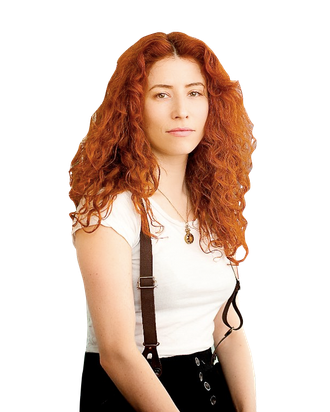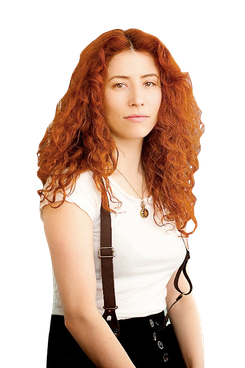

This year’s Tribeca Film Festival has an unusually strong documentary lineup, but Bombay Beach, the brilliant debut documentary from Israeli music-video director Alma Har’el, is a standout: Cockeyed and stylized, as poetic as it is reported, the gorgeously shot film follows three people in Bombay Beach, a burned-out husk of a vacation boom town on the fetid shore of California’s hypersalinated Salton Sea. A mischievous old man named Red spouts folksy koans like an uncapped philosophical fire hydrant; a teenage jock named Ceejay woos a girl while on a holiday from the gang violence of South Central; and then there’s Benny Parrish, a beguiling bipolar tween with a love of fire trucks, a knack for getting suspended, and a family that’s been dealing with federal antiterrorism charges owing to their love of blowing shit up in the backyard. We spoke to Har’el about her unusual decision to pair vérité footage with staged, theatrical dance sequences, the film’s extensive use of music by Beirut and Bob Dylan, and working in the shadow of Werner Herzog.
How did you find these folks?
I came here once for the music video for “Concubine” with Beirut. That’s how I found Bombay Beach and met the Parrishes. When I watched the footage of the video, I knew I wanted to do this. So I moved there, walked through the streets. I bumped into Ceejay. I said, “Do you want to do a film?” And he said, “Yeah.” I didn’t even know his story, but I liked him. I said, “Would you dance, though?” He was like, “Yeah, I’ll dance.” And I said, “Cool, we’ll do a movie together.” He thought I was just a crazy person.
You’ve done music videos for bands like Beirut and documentaries for National Geographic. This is kind of halfway between the two.
I didn’t even think about that. I’m really one of those people that don’t plan out their careers. The year before this documentary, I did have the idea to do a documentary with people who are not dancers and have dance in it. I love to see people who are not dancers dance. It becomes like a language that they’re not used to speaking and they reveal so much of themselves. People used to integrate dance into films back in the day in ways that were more free-spirited, like Ginger Rogers and Fred Astaire. The characters didn’t have to be dancers in order to start dancing.
By enlisting your subjects as dancers in these specific sequences, did that change your relationship?
I think it created a very different dynamic. It opened up a lot of conversation about what we were doing and opened up a lot of creativity and imagination. It gave us a way to approach certain things that maybe we weren’t ready to talk about, but we could explore through the dance. We’d set [scenarios] up and improvise on the subject matter. Those are very much documentary moments. We’re documenting the real responses. But at the same time, they had a magical quality.
Did you think about parallels to the way analysts use art therapy?
I was definitely thinking about it, but I didn’t see myself as a therapist. I thought that I was getting as much therapy as they were by getting to explore a lot of stuff, like love and violence and childhood and romance. But, yes, having the kind of liberty to imagine your own life in certain ways you don’t get all the time can help you get at those things that are hard to talk about.
The Parrishes have a kind of mythic way of seeing themselves, and you’re able to get at that fictional stuff we have inside our heads — our fantasies and our dreams — that doesn’t usually come across in documentaries.
Right! In a way, it’s about these American dreams that got broken, and what it is to be an American and all the violence and love that goes with it. Mike [Parrish] is a super-patriotic American kind of dreamer. At the same time, he was put in jail for conspiracy, and maybe building a militia, and terrorism, and all those things. But there’s this wishful fantasy. They have so much imagination and dignity, and love for each other. They really wanted to be in the Army, you know. The first thing Mike asked me [about the Tribeca Film Festival] was to take photos of ground zero for him.
The film isn’t topical, but it is resonant with a lot of what’s going on in this country, economically and militarily.
I never went to make a social-political film, but it’s there. It’s all there in the texture of their lives: Ceejay, coming from South Central to make it in Bombay Beach. That’s a crazy notion! You show it and then let the images and the metaphors speak for themselves. It’s not topical. It’s about people’s lives and imaginations, and what they create around themselves in a reality that doesn’t really define them because that place is so undefined. Bombay Beach is so between worlds, between the grayish past and the ghostly present.
The young boy Benny has such a tough time, but he says he dreams of being a firefighter. So you choreograph a whole dance sequence with him and a fire truck. It’s like the best birthday party ever.
The fire department was so cool. But at first it was really bad. Because someone started all these rumors that I’m like a child molester. Because they saw me hanging out with all the kids all the time, and nobody knew what the hell I was doing. And I had a camera. And a room at the hotel, where I was interviewing. So they warned the fire department. I had to go and meet with them, show them some footage of my work. I was like, “I’m filming one kid, Benny.” He said, “Everybody knows Benny … ” Benny felt really good about it. He’d been getting a lot of shit from other kids …
There are constant debates about how much a photographer should stage a shot, from Diane Arbus to reality TV. But you don’t just give kids masks, you invent imaginary games and scenarios. Are you anticipating that debate?
I’m not big on purism. This idea of purism, in anything, is so limiting. Everything is just legitimate to me. Any documentary filmmaker knows how much manipulation and how much effort is being put into creating a dramatic movement in any kind of work, you know? I truly don’t understand, honestly.
At every festival I cover, I feel that there’s someone criticizing someone for shooting out of sequence, or going back for more coverage.
You know, Werner Herzog — he speaks about poetic truth. I think he’s right. I actually know him, and his wife is a good friend of mine. He saw my film and he loved it and he said to me facts are for the phone book. All you’re supposed to do with your art is get together with these people. This isn’t just a documentary, they are collaborators. So maybe there’s a different name to call those things?

